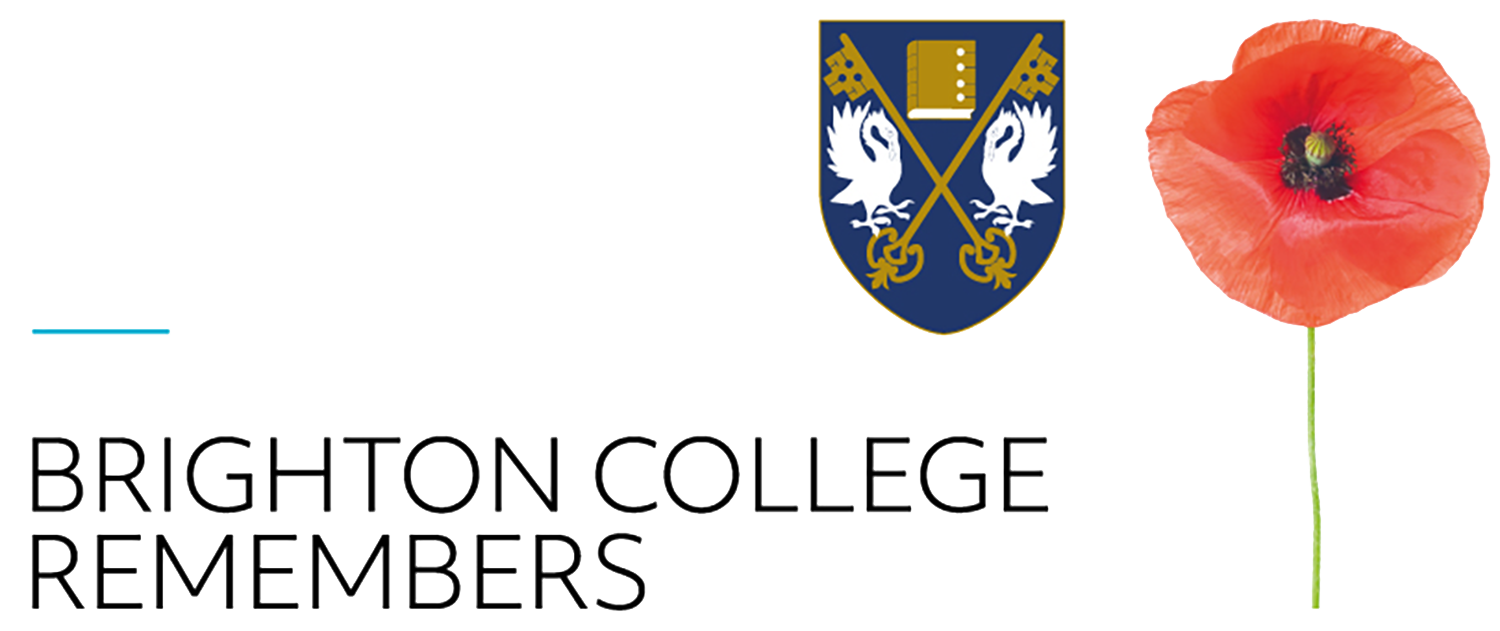Lieutenant, Welsh Regiment
Born: July 28th 1891
Died: February 16th 1915
Age at Death: 23
Killed in action, France, February 16th 1915
Went to Bradfield College followed by R.M.C. Sandhurst. Welsh Regiment (2nd Lieut 1911, Lieut 1912).
A donation to the memorial statue has been made in honour of this soldier by Brighton College Prep School Parents.
Brighton College Register: Son of Reginald B Pope - also at Brighton College (BC). Brother Eric Pope (BC).
Reginald Thomas Buckingham Pope
Reginald was born at Eton Place in 1892, the second son of Mary Richardson Reid and Reginald Barrett Pope, a Brighton solicitor and former churchwarden of St Mary's. His parents later lived at The Cliff, Blackrock, Brighton. His father died in 1913 aged 56 and his mother died in 1921. He had three sisters and two brothers, one of whom was also killed in the First World War.
He was educated at Brighton College (Junior House) between 1901 and 1904 before proceeding first to Rottingdean School and then to Bradfield College where he was a keen cricketer. After Bradfield he went to the RMC Sandhurst in 1911 where he graduated 23rd in his cohort of cadets and received a commission as Second Lieutenant in the Welsh Regiment on September 23rd 1911.
He served with the Welsh Regiment in Egypt, The Sudan and India. On 16th July 1912 he was promoted to Lieutenant and regimental records also indicate that he enjoyed big game shooting with his fellow officers around the source of the White Nile, then relatively unchartered territory. Surviving relatives remember a large number of big game trophies which were exhibited in the Pope family home for decades afterwards. On the outbreak of war 1st battalion Welsh Regiment, stationed in India, was one of the last of the original regular battalions to be posted to France, arriving in January 1915.
On the 23rd February 1915 the battalion was in line near Ypres when it was subjected to a flank attack by the enemy which, although not part of a major offensive, clearly inflicted considerable casualties on the newly arrived battalion. It was in the course of this action that Pope lost his life. Following his death Pope’s commanding officer wrote to his brother Eric, his father having pre-deceased him, and included a detailed account of his death and the subsequent retrieval of his body:
‘We had a most terrible time. . . . Your brother thought he had seen a sniper and got up with a rifle to try and shoot him, when almost immediately he was hit right through the forehead. He died at once without any suffering at all. When night fell I managed to get his body back and had him sent out of the trenches. He is buried at Chateau Rosenthal, Ypres between Capt. Lloyd and another officer.’
Thanks to that officer’s actions Pope was, unlike so many others, buried in a marked grave at the Bedford House Cemetery, West-Vlaanderen, Belgium. He is also commemorated in a remarkable stained glass window depicting St. Oswald which can be seen on the liturgical south wall of the sacristy lobby at St Mary’s Church in Kemp Town, Brighton. The window, and another in memory of Pope’s brother Cyril who was also killed in the war, was donated by Pope’s mother shortly after the First World War. St. Oswald was a Christian warrior king of Northumbria killed while fighting the pagan Mercians in 641. While an unusual memorial to a dead son it seems somehow fitting in the case of Reginald Pope, who appears from the available accounts of his life to have been a similarly fearless warrior.
The Pope family name lives on in the Burgess Hill solicitors’ firm ‘Steven’s Son and Pope’.
Source: LEST WE FORGET PROJECT, Brighton College 2014/15

